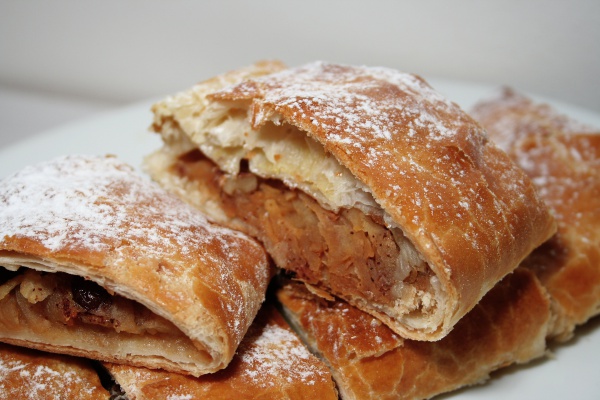Facts About Apple strudel
Apple strudel is a cherished Viennese pastry that has gained admiration not only in Austria but also in Northern Italy and other regions of Europe that were once part of the Austro-Hungarian Empire. The term "strudel" originates from the German word for "whirlpool" or "eddy" a nod to the pastry’s swirling layers.
The earliest known recipe for strudel dates back to 1697, and its popularity soared in the 18th century, fueled by the influence of the Habsburg Empire. Today, apple strudel is celebrated as a national dish of Austria. Intriguingly, it shares a connection with baklava from the Ottoman Empire, introduced to Austria through Hungarian cuisine.
Preparing apple strudel involves creating a delicate, thin dough known as "Blätterteig" which is made from flour, oil or butter, and salt. The process is meticulous: after the dough is kneaded and allowed to rest, it is rolled and stretched until it becomes almost translucent. The filling typically consists of grated cooking apples, sugar, cinnamon, and bread crumbs. Once the filling is spread over the dough, it is folded and rolled up before baking.
Traditionally, apple strudel is served warm in slices and dusted with powdered sugar. It is often accompanied by toppings such as vanilla ice cream, whipped cream, or custard. This delectable pastry is a staple in Viennese cafes, where it is commonly enjoyed with a cup of tea, coffee, or even a glass of champagne.

 Hungary
Hungary